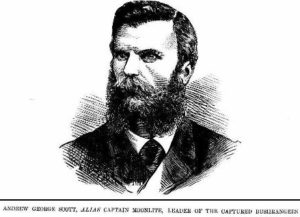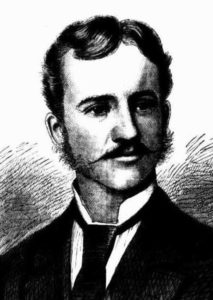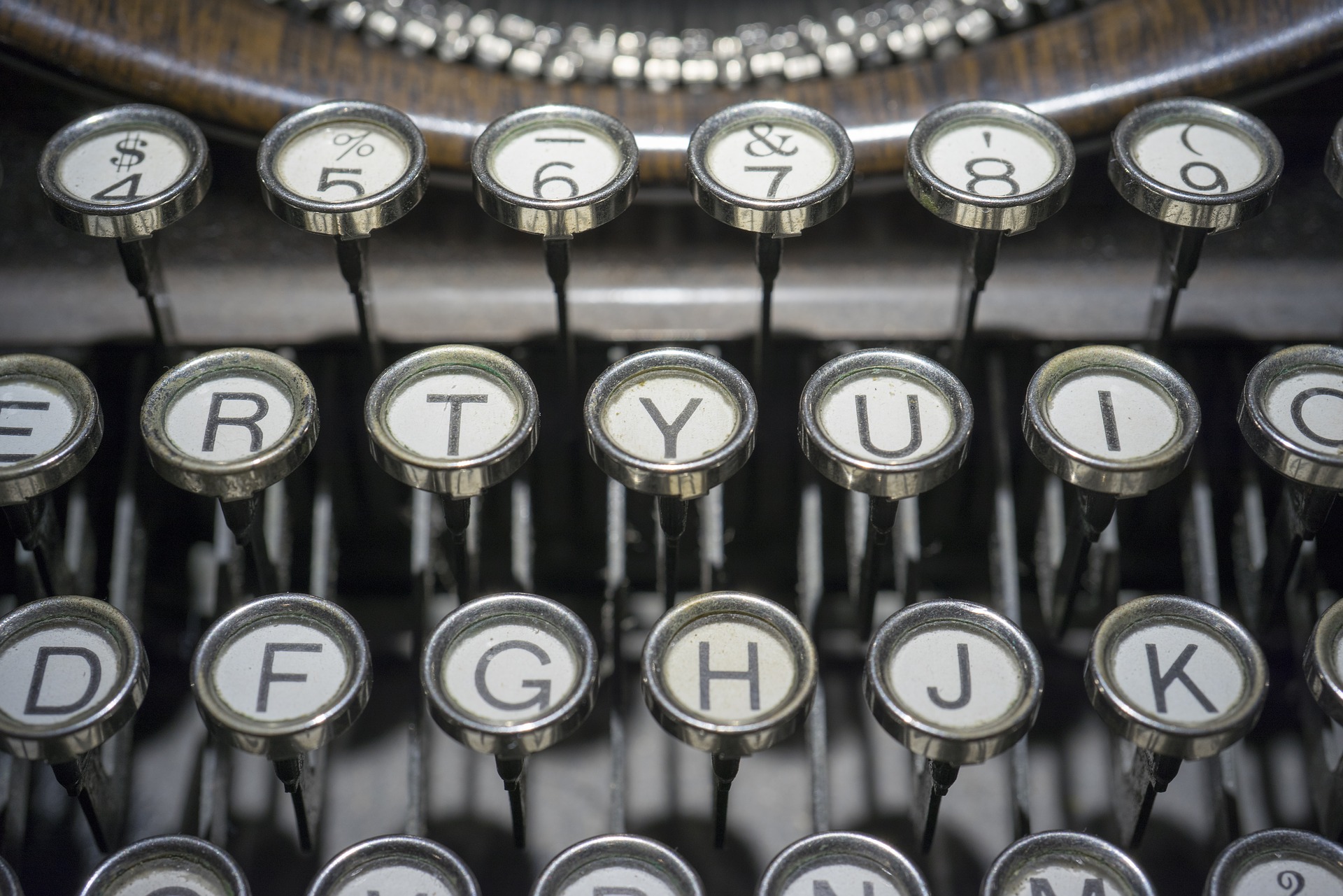Report of Trial Testimony
The police called on them to surrender. Scott (Captain Moonlite) replied, ‘ Surrender be _____ , come on and fight.’ The bushrangers opened fire before the police fired. There were 18 or 20 people round the bus hrangers when the fight was going on.
hrangers when the fight was going on.
Constable John Hedley… described the shooting of Constable Bowen, which (he said) was done by prisoner Scott. After Bowen fell, Hedley joined Constable Gorman in the back bedroom, when Gorman shot through the window at Nesbitt, and killed him. Immediately afterwards somebody called out, ‘We surrender.’ Sergeant Cassin arrested Scott, Bennett and Williams. Rogan was found under a stretcher in the same room that Gorman was in when he shot Nesbitt. A double-barrelled gun was found in the same room next morning. When Bowen fell, ‘nobody else was firing from the same direction that Scott fired from, or from any other direction.’ Scott cross-examined this witness (Hedley) at considerable length, but did not elicit anything of importance. Hedley first accused Scott of shooting Bowen. When Hedley saw Nesbitt’s body he called the dead man a coward ; and upon Scott saying ‘ He w as no coward ; you are the coward, sir,’ that he accused him of shooting Bowen.
as no coward ; you are the coward, sir,’ that he accused him of shooting Bowen.
Scott: ‘Will you swear that?’
Hedley: ‘Yes.’
Scott: ‘God forgive you ; you would swear anything.’
Robert M’Killop, duly qualified medical practitioner, residing at Gundagai, being sworn, stated he knew the late Constable Bowen. He died early in the morning of the 23rd November. Witness had attended him from the 17th to that date. Made a post mortem examination
on the evening of the 23rd. Found a gunshot wound on the left side of the base of the neck, extending backwards and slightly downwards through the skin and muscular tissue. Found a bullet lodged in the right side of the vertebrae, lying against the bone.
The cause of death was a gunshot wound. The bullet (produced) was extracted from the wound. He had examined it with a Colt’s revolver and Martini Henri-rifle, and believed that it was fired from a Colt’s revolver. He had compared it with the Snider rifle and found it the same size in the bore, but there were some marks upon it that did not correspond with the Snider rifle. The bullet weighed a drachm and 12 grains.
During his examination at Gundagai, Scott said that the bullet did not come from a Snider rifle, but a small Colt’s revolver. He also said he knew who fired it ; that he did not, and he was not an informer, and would not say who did. [Scott asked to see the bullet, which he handled with evident curiosity.]
Freeman’s Journal (Sy dney, NSW : 1850 – 1932), Saturday 13 December 1879
If Scott was firing with a Snider rifle and the Constable was shot by a Colt’s revolver, who fired the shot?
9Circles
